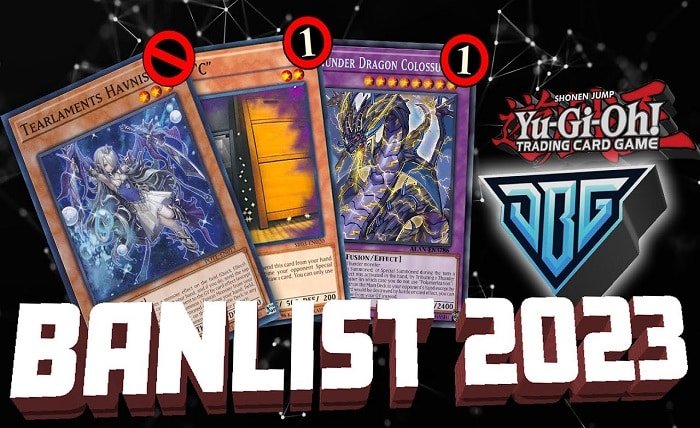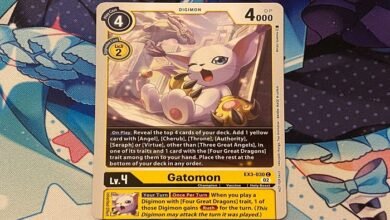
In the world of Yu-Gi-Oh! Trading Card Game (TCG), the term “banlist” refers to the official list of cards that are restricted, limited, or banned from tournament play. This crucial document, officially known as the Forbidden & Limited List, plays a significant role in maintaining the balance and fairness of competitive play. Understanding the banlist is essential for both new and seasoned players as it directly impacts deck-building strategies and overall gameplay dynamics.
The Evolution of the Banlist
The banlist in Yu-Gi-Oh! TCG has evolved significantly since the game’s inception. Initially, the list was simple and primarily included a few cards deemed too powerful. Over the years, as new cards and mechanics were introduced, the banlist grew more complex. This evolution reflects the game’s ongoing development and the need to address emerging balance issues.
Why the Banlist Matters in Competitive Play
In competitive Yu-Gi-Oh! TCG, the banlist serves as a regulatory measure to ensure that no single card or strategy dominates the meta. By restricting or banning certain cards, the list helps maintain a diverse and dynamic competitive environment. Players must adapt their strategies based on the current banlist, making it a central element of tournament play.
The Structure of the Banlist
The Yu-Gi-Oh! TCG banlist is divided into three main categories: Forbidden, Limited, and Semi-Limited. Each category serves a specific purpose:
- Forbidden: Cards in this category are completely banned from play. They cannot be included in any deck.
- Limited: Cards on this list can only be included in a deck in limited quantities, usually one per deck.
- Semi-Limited: Cards in this category can be included in a deck in slightly higher quantities, typically two per deck.
Recent Changes in the Banlist
The banlist is updated periodically to reflect the shifting dynamics of the Yu-Gi-Oh! TCG meta. Recent changes often address new strategies or overpowering cards that have emerged. Keeping up with these updates is crucial for players who wish to stay competitive and adapt their decks accordingly.
How to Interpret the Banlist
Interpreting the banlist involves understanding which cards are affected and how these changes impact your deck. A card that was once a staple might become less viable if it is moved to the Forbidden list, while a newly Limited or Semi-Limited card might suddenly become a key component of effective strategies.
Impact of the Banlist on Deck Building
Deck building in Yu-Gi-Oh! TCG is heavily influenced by the banlist. Players need to consider the availability and restriction of cards when constructing their decks. A well-constructed deck must adapt to the current banlist to maximize effectiveness and maintain competitiveness in tournaments.
The Role of the Banlist in Balancing the Game
One of the primary purposes of the banlist is to balance the game by preventing the dominance of certain cards or strategies. By regularly updating the list, Konami ensures that no single card or deck archetype becomes overwhelmingly powerful, thereby preserving the game’s integrity and competitiveness.
Common Strategies for Adapting to the Banlist
Adapting to the banlist requires strategic thinking and flexibility. Players often need to adjust their deck compositions and strategies based on the current list. This might involve incorporating new cards, changing tactics, or even developing entirely new strategies to remain competitive.
The Community’s Response to the Banlist
The Yu-Gi-Oh! TCG community often has varied reactions to changes in the banlist. Some players may welcome the updates as a way to refresh the meta, while others might be frustrated by the loss of key cards. Engaging with the community and understanding different perspectives can provide valuable insights into how the banlist affects players at all levels.
How the Banlist Affects Different Formats
Yu-Gi-Oh! TCG features various formats, including Standard and Advanced, each with its own set of rules and restrictions. The banlist impacts these formats differently, and players must be aware of the specific rules governing each format to optimize their deck and strategy.
The Future of the Banlist
Looking ahead, the future of the Yu-Gi-Oh! TCG banlist will likely continue to evolve as the game progresses. With new cards, mechanics, and strategies constantly being introduced, Konami will need to make ongoing adjustments to maintain balance and fairness in the game.
Conclusion
The Yu-Gi-Oh! TCG banlist is a fundamental aspect of the game’s competitive scene, shaping deck-building strategies and influencing gameplay dynamics. Understanding the banlist is crucial for players who want to stay competitive and adapt to the ever-changing landscape of Yu-Gi-Oh! Whether you’re a seasoned veteran or a newcomer, keeping up with the banlist will enhance your gameplay experience and ensure that you remain at the forefront of the game’s strategic evolution.
FAQs
1. What is the Yu-Gi-Oh! TCG banlist?
The Yu-Gi-Oh! TCG banlist, or Forbidden & Limited List, is an official list of cards that are restricted, limited, or banned in tournament play to maintain game balance.
2. How often is the banlist updated?
The banlist is typically updated several times a year to address balance issues and reflect changes in the game’s meta.
3. What are the categories of cards on the banlist?
The banlist categories include Forbidden (completely banned), Limited (one copy per deck), and Semi-Limited (two copies per deck).
4. How does the banlist affect deck building?
The banlist affects deck building by restricting the use of certain cards, requiring players to adjust their deck compositions and strategies accordingly.
5. Where can I find the latest banlist updates?
The latest banlist updates can be found on the official Yu-Gi-Oh! website or through official tournament organizers and community forums.





